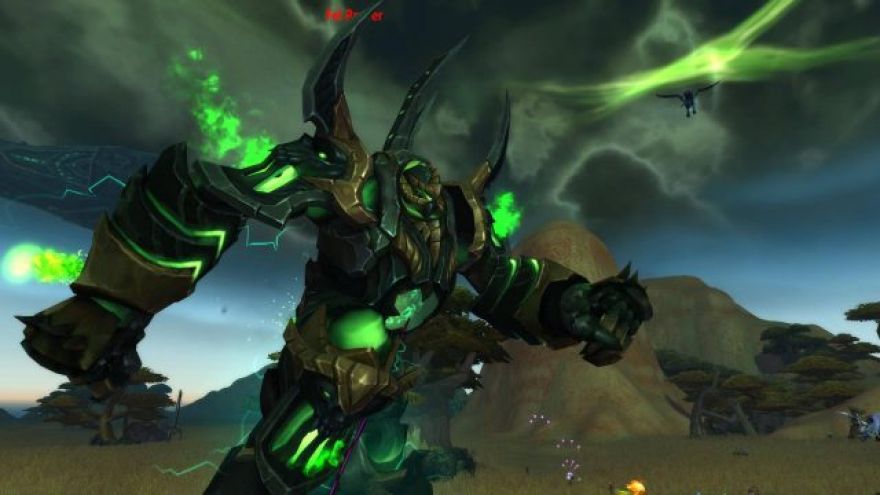
Returning to Azeroth: How does World of Warcraft play after years away?
In the spring of 2004 I joined the closed beta test for World of Warcraft. I’d tried Everquest in college and beta tested Asheron’s Call, but standing around in a single spot and killing respawning wolves forever wasn’t my idea of fun and the plots of MMOs in those days was pretty threadbare. I’d enjoyed Warcraft 2 and 3 a great deal and the World of Warcraft promised to extend these storylines in new directions while offering better quests, soloing, and an overall story that other MMOs at the time lacked.
I liked it so much I stayed for six years.
Since then, I’ve been gone from WoW. I envisioned going back to the game would be easy, like slipping into a familiar pair of pants. Instead, it’s been more like falling down several flights of stairs or waking up in an alternate universe. The scenery might look similar (though the graphics engine has been significantly updated since the old days), but the fundamentals of the game have changed.
With Legion, Blizzard made significant changes to every class, slashing the number of spells and splitting capabilities to make individual classes feel more specialized. A great deal of redundancy and secondary capabilities were cut, and former talents that were common to the class have been split and separated. The end result is that the number of abilities and spells you need to learn has been drastically reduced — but the changes have also left me repeatedly reaching for spells that don’t exist.
Some of the biggest changes to the game since I last played are structural — how various in-game items are grouped, how they function, and where you find them. We’ve rounded these up in a slideshow, along with a few before-and-after screenshots to show how the game has evolved since “vanilla” WoW, circa 2006. To be clear, while some of the functions I’ll be showcasing existed back in 2011 when I quit seriously playing, their functionality and capability has evolved significantly over the past few years.











There are other changes that don’t fit neatly in a slideshow. Servers used to be unique unto themselves — if you played on Zul’jin you never saw or interacted with players from, say, Alleria. Later, Blizzard introduced a PvP (Player vs. Player) system that grouped players on each server with a group of players on a specific set of different servers, called Battlegroups. If you played on Server A, you’d PvP against players on Servers B, C, and D. If you played on Server E, you PvP’d against players on Servers F, G, and H. Now, the entire server community is nearly merged. I say nearly because there are certain actions that you still can’t do — no cross-server trading, for example, and no cross-server guilds. In many ways, however, the player base feels unified.
There are practical advantages to this — it allows for easy grouping and ensures that zones feel “full” even when players on one zone may be mostly asleep. It also makes the game feel a bit less like a community by drastically expanding the number of people and guild-names you’ll see at any given time. While this might sound a bit odd, running through Stormwind or Ironforge you got to know the people you’d see in and around the game, even if you never conversed with them personally. Cross-realm groups steal a bit of that — who you see around you changes more quickly as players phase in and out and the system feels a bit off as a result.
Initial Verdict
Since I started playing again, the primary thing I’ve done is level up several characters in the demonic invasion events that occurred across the continents of Azeroth. Now that Legion has launched, I’ll be diving into that content and getting a better feel for how the game has evolved in group play. I’ve needed the warm-up. my two main characters are a Paladin and a Warlock, and both have changed so fundamentally I feel like I’m playing an entirely different game, not the evolved or super-powered version of the character I signed off with back in 2012.
But I’m going to stick with it, for at least a little while. MMOs have a bad rap as timesucking titles with 10-20 hour per-week requirements. WoW seems to have sanded off many of its rough edges in that regard, and while this is far from a total overview of its changes and new options, hopefully it gets the point across. But MMOs are also made up of people and many of the friends I made in WoW have stayed friends, even though I haven’t tanked a raid in nearly five years.
So what would I say, to returning players or potential new ones? For better or worse, the new World of Warcraft isn’t like the one I left in 2012. I’m still figuring out if that’s a good thing or not. Learning to play the game should be easier thanks to the vast talent simplification and it’s never been easier to find a group of people to play with. I’ll be heading into Legion to see what I can find — and there’s enough of the old magic to make me cautiously optimistic.
Am I wishing for a legacy server? In some ways, I am. I can even sympathize a bit more for people to the classic game, even if I’d vastly prefer a TBC or WotLK server.
Feature and article images